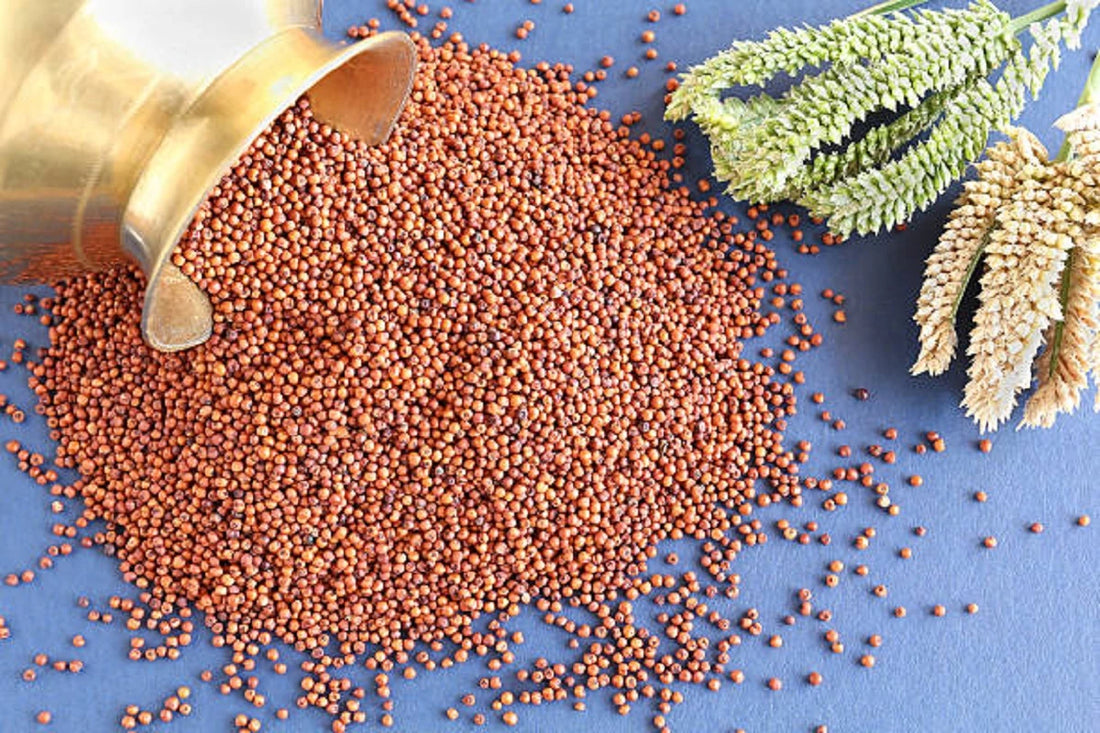Liked this article? Follow our other blogs for awesome and healthy millet recipes and benefits!
Check out our range of gluten free, healthy millet delights here.
Welcome to Millet Maagic
Welcome to Millet Maagic
Welcome to Millet Maagic
Welcome to our store


Millets are making a big come back as these ancient grains are valued for their nutritional and versatile nature. These “nutri-cerals” have been a staple part of diets across Asia and Africa. Known for their drought resistance, they can be grown without the need for water-intensive practices like that of rice. But how do they fare as a protein source? Can they add value to a high-protein diet? Let’s find out in detail about the protein content of various millets.
Millets are gluten-free grains and belong to the grass family Poaceae. They can be a major source of carbohydrates and proteins and can be substituted for rice and wheat to increase the nutrition content of your regular diet.
Millets are of two type: Major millets like foxtail millet, finger millet, pearl millet, and proso millet ; and Minor millets like little millet, barnyard millet, kodo millet, and browntop millet.
Millets are not just a great source of fiber and energy but are also protein-rich, making them an excellent addition to a balanced diet. Here's a detailed breakdown:
|
Grain Type |
Protein (per 100g) |
|
Foxtail Millet |
11.2g |
|
Pearl Millet |
11.8g |
|
Finger Millet (Ragi) |
7.3g |
|
Kodo Millet |
8.3g |
|
Barnyard Millet |
6.2g |
Rich in crude dietary fibre, millets help with digestive issues like constipation and aid in promoting gut health. They also help in burning calories as it keeps you full for longer after consumption, therefore preventing the huger pangs.
Millets provide minerals like calcium, magnesium, and iron. While calcium supports bone health, magnesium contributes to nerve and muscle function, and iron aids in preventing anemia.
Millets contain antioxidants and essential amino acids that support immune function and overall health, providing protection against oxidative stress.
For those on vegetarian or vegan diets, millets are an excellent alternative to animal-based protein sources. They are also suitable for people with gluten intolerance or celiac disease.
Millet proteins are easier to digest compared to some other plant-based proteins. Although millets lack certain essential amino acids like lysine, combining them with legumes or other protein-rich foods can create a complete amino acid profile.
Millets are versatile and can be incorporated into your regular diet seamlessly. Here are some ways to include them in your diet to boost protein intake:

Q1: Which millet has the highest protein content?
Among commonly used millets, Kodo millet and Finger millet (Ragi) have some of the highest protein levels, making them excellent choices for protein-rich diets.
Q2: How can I use millets to increase protein intake?
Incorporate millets like Foxtail or Pearl millet into your diet through dishes like porridge, dosa, salads, or even protein-packed millet-based bowls. Pair them with legumes or nuts to boost protein content.
Q3: Can millets be included in a high-protein diet for muscle building?
Yes, millets are a great addition to a high-protein diet. They are plant-based sources of protein and work well when combined with other protein-rich foods like lentils, chickpeas, or paneer to support muscle growth.
Q4: What is the protein content of Foxtail millet and Pearl millet?
Liked this article? Follow our other blogs for awesome and healthy millet recipes and benefits!
Check out our range of gluten free, healthy millet delights here.